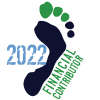I'll preface all of the
I'll preface all of the comments below with: I'm not a doctor or a medical professional. I've battled PF for a long time and I seem to be over it - in my opinion thanks to minimalist and barefoot concepts and activities. PF has become more than an obsession for me as I've tried to figure out what was going on in my body.
Your first question involves a concept I think is just totally fascinating: Reciprocal Inhibition. When one muscle is contracted the muscle on the opposite side must be told by the brain to relax. So from what I know - yes - working the muscles on the front of the shin should aid in helping the calves relax.
To your second question: In my opinion BFR can be a component of the cause of injury and it also can be a component of the cure of the injury. The difference between the two is the state of many other aspects of the body and the person’s approach to BFR and having the right form. BFR taxes the body in many different ways than running with traditional running shoes does. Therefore, if BFR is pursued aggressively when the rest of the mind and body isn’t ready then it can cause damage. However, if the other parts of the body and mind are basically healthy and approach BFR in a way or rate commensurate with one’s capabilities BFR can stress the body in a good way and make it stronger and healthier. In my mind I use the analogy of having an arm in a sling for a long time then removing it and doing more with the arm. Weight lifting can have a rehabilitative effect when done at a level commensurate with the arm’s capabilities, but it can have a damaging effect if it is pursued too aggressively for the arm’s capabilities.
Jim
I'll preface all of the comments below with: I'm not a doctor or a medical professional. I've battled PF for a long time and I seem to be over it - in my opinion thanks to minimalist and barefoot concepts and activities. PF has become more than an obsession for me as I've tried to figure out what was going on in my body.
Your first question involves a concept I think is just totally fascinating: Reciprocal Inhibition. When one muscle is contracted the muscle on the opposite side must be told by the brain to relax. So from what I know - yes - working the muscles on the front of the shin should aid in helping the calves relax.
To your second question: In my opinion BFR can be a component of the cause of injury and it also can be a component of the cure of the injury. The difference between the two is the state of many other aspects of the body and the person’s approach to BFR and having the right form. BFR taxes the body in many different ways than running with traditional running shoes does. Therefore, if BFR is pursued aggressively when the rest of the mind and body isn’t ready then it can cause damage. However, if the other parts of the body and mind are basically healthy and approach BFR in a way or rate commensurate with one’s capabilities BFR can stress the body in a good way and make it stronger and healthier. In my mind I use the analogy of having an arm in a sling for a long time then removing it and doing more with the arm. Weight lifting can have a rehabilitative effect when done at a level commensurate with the arm’s capabilities, but it can have a damaging effect if it is pursued too aggressively for the arm’s capabilities.
Jim








